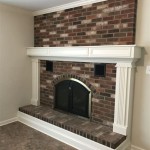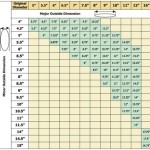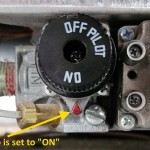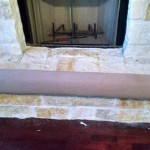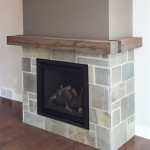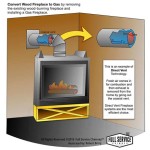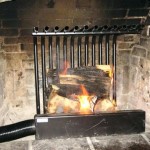Freestanding Corner Fireplace: A Comprehensive Guide
The freestanding corner fireplace represents a versatile and aesthetically pleasing heating solution for a variety of residential spaces. Unlike traditional fireplaces built into a wall, a freestanding corner unit offers flexibility in placement and often simplifies installation. This article will delve into the advantages, considerations, and types of freestanding corner fireplaces, providing a detailed overview for potential buyers.
Space Optimization and Design Versatility
One of the primary benefits of a freestanding corner fireplace is its ability to effectively utilize otherwise underutilized corner spaces. Corners often present design challenges, becoming catch-all areas for clutter or remaining empty and unproductive. Installing a corner fireplace transforms such a space into a focal point, adding warmth and visual interest. This is particularly advantageous in smaller rooms where maximizing usable floor space is crucial.
The aesthetic versatility of freestanding corner fireplaces is another significant advantage. These units are available in a wide range of styles, from traditional cast iron designs to modern, minimalist constructions. This allows homeowners to select a fireplace that seamlessly integrates with their existing décor. The design choices extend beyond style, encompassing variations in size, shape, and finish, ensuring compatibility with diverse interior design schemes.
Furthermore, corner fireplaces can contribute to improved room layout. By placing the fireplace in a corner, furniture arrangement becomes more defined. Seating can be oriented towards the fireplace, creating a natural gathering space. This is particularly beneficial in open-plan living areas, where the fireplace can serve as a visual anchor, delineating different functional zones within the larger space.
The visual impact of a corner fireplace is often amplified by its location. Positioned at an angle, the fireplace becomes visible from multiple vantage points within the room, enhancing its prominence. This is especially relevant for models with striking designs or captivating flame displays. In essence, a freestanding corner fireplace not only provides warmth but also serves as a dynamic design element, elevating the overall ambiance of the room.
Installation Considerations and Safety Measures
The installation process for a freestanding corner fireplace is typically simpler and less disruptive compared to that of a built-in fireplace. Since these units are self-contained, they generally do not require extensive structural modifications to the existing building. However, proper planning and adherence to safety regulations are paramount for a successful installation.
The first step involves assessing the corner space and ensuring that it meets the minimum clearance requirements specified by the manufacturer. This often includes maintaining a certain distance from combustible materials such as walls, furniture, and draperies. Adequate ventilation is also crucial for ensuring safe and efficient operation, particularly for fireplaces that burn solid fuels.
For gas or electric fireplaces, a qualified technician should handle the connection to the gas line or electrical outlet. Improper connections can pose significant safety hazards, including gas leaks or electrical shocks. Local building codes often mandate that such work be performed by licensed professionals.
Proper venting is a critical aspect of fireplace installation. Depending on the type of fireplace, different venting options may be available. Direct vent fireplaces exhaust combustion byproducts directly to the outside through a sealed system, while vent-free models rely on catalytic converters to minimize emissions. Each type has its own installation requirements and limitations, which must be carefully considered. It is important to consult with a qualified installer to determine the most suitable venting solution for the specific fireplace and the existing building structure.
Safety measures should extend beyond the initial installation. Regular maintenance, such as cleaning the venting system and inspecting the firebox, is essential for preventing malfunctions and ensuring continued safe operation. Smoke detectors and carbon monoxide detectors should be installed in the vicinity of the fireplace to provide early warning in case of any hazardous conditions.
Childproofing is another important consideration, especially for households with young children. Fireplace screens or barriers can prevent accidental contact with hot surfaces, reducing the risk of burns. Educating children about the dangers of fire and the importance of maintaining a safe distance from the fireplace is also crucial.
Types of Freestanding Corner Fireplaces
Freestanding corner fireplaces are available in a variety of fuel types, each offering distinct advantages and disadvantages. The most common types include wood-burning, gas-burning, and electric fireplaces.
Wood-burning corner fireplaces provide the classic ambiance of a traditional fire, with the crackling sounds and flickering flames that many find appealing. However, they also require a consistent supply of firewood and entail more maintenance, including ash removal and chimney cleaning. Wood-burning fireplaces produce smoke and emissions, so proper venting is essential to ensure air quality.
Gas-burning corner fireplaces offer a convenient and efficient alternative to wood-burning models. They can be easily turned on and off with the flip of a switch or the push of a button, and they produce consistent heat output. Gas fireplaces are available in both natural gas and propane versions, allowing homeowners to choose the fuel source that is most readily available and cost-effective. While gas fireplaces do not require firewood, they do require a gas line connection, which may necessitate professional installation.
Electric corner fireplaces are the simplest to install and operate. They do not require venting or fuel connections, making them suitable for a wide range of locations. Electric fireplaces use heating coils to generate warmth, and they often feature realistic flame effects that mimic the appearance of a real fire. While electric fireplaces do not produce real flames, they offer a safe and convenient heating solution, particularly for smaller spaces or supplemental heating needs. These units typically use standard electrical outlets and are available in varying BTU (British Thermal Unit) outputs to suit different room sizes. They are often chosen for their ease of use and installation. Furthermore, many electric models have adjustable heat settings and built-in thermostats to maintain desired temperatures, contributing to energy efficiency.
In addition to the fuel type, corner fireplaces can also be categorized based on their design and construction materials. Cast iron fireplaces offer a traditional aesthetic and retain heat well, while steel fireplaces are more lightweight and modern in appearance. Stone fireplaces provide a rustic and natural look, while glass fireplaces offer a sleek and contemporary design. The choice of materials can significantly impact the overall style and feel of the room.
Beyond the basic fuel types and materials, specialized options exist. For example, electric fireplaces with integrated media centers provide a combined entertainment and heating solution. These units often feature shelves and compartments for storing electronic devices and media components. Similarly, some corner fireplaces incorporate built-in bookshelves or display cabinets, maximizing the use of the corner space and adding functionality to the design.
The selection of a corner fireplace should consider not only the aesthetic preferences but also the heating requirements and practical limitations of the space. Factors such as room size, insulation levels, and existing heating systems should be taken into account to ensure that the chosen fireplace provides adequate warmth and operates efficiently.

30 Awesome Corner Fireplace Ideas For Your Living Room Freestanding Mid Century Modern Design

59 Elegant Corner Fireplace Ideas Designs For Your Home 2024 Furniture Arrangement Makeover

Free Standing Corner Wood Fireplace Colaboratory

Corner Ventless Gas Fireplace Visualhunt

Siena 750 Corner Freestanding Hot Water Heating

Freestanding Wood Burning Stoves With Versatile Designs

Wood Heating Stove Bora Corner Dru 5 Kw 10 Free Standing

Pin By Aaron Aiden French On Decorating Freestanding Fireplace Corner Wood Stove

Valor Freestanding Gas Fireplaces Patio Palace

Masport Clunes Wood Heater Home Fires
Related Posts

